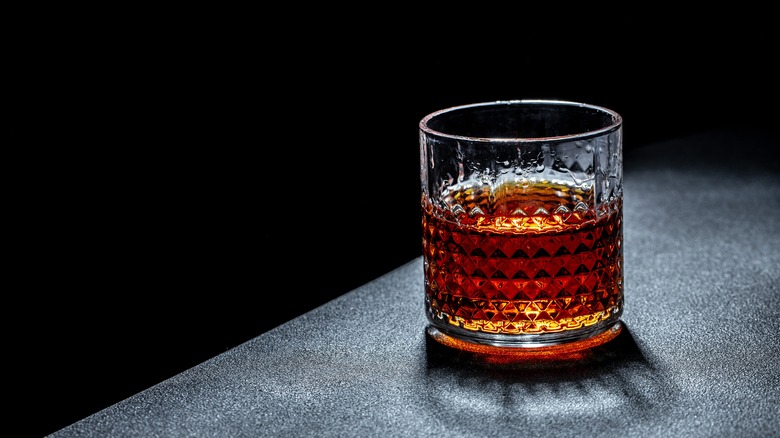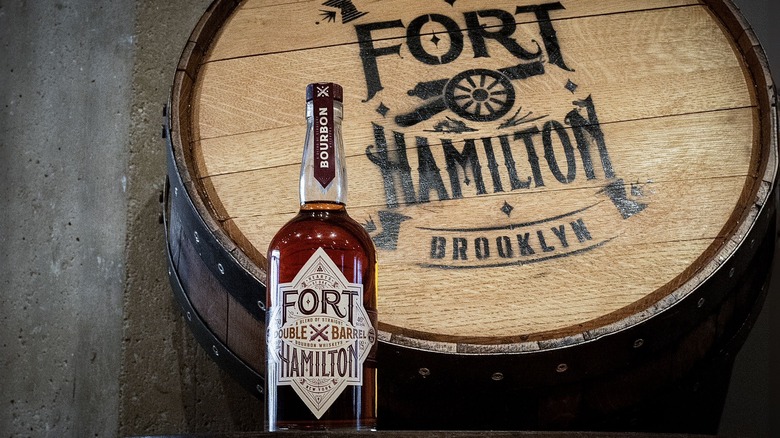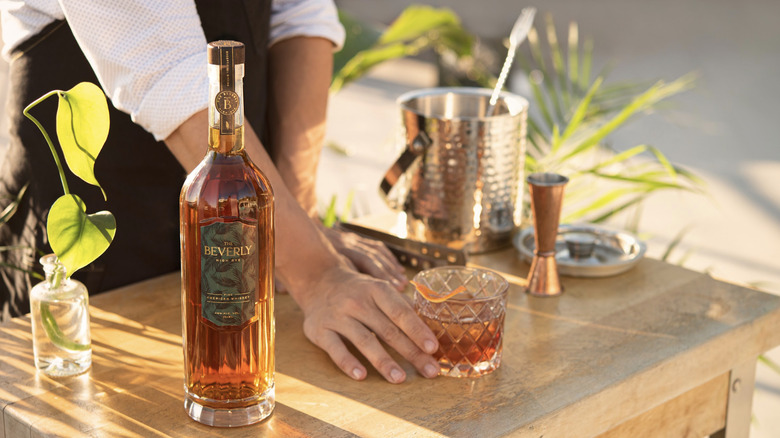What Exactly Is A High-Rye Bourbon?
While the world of whiskey is vast, encompassing spirits as diverse as Irish whiskey, Canadian whiskey, and Scotch, it's rye and bourbon that are often portrayed as opposites in the classic American cocktail canon. Rye is spicy and punchy, reminiscent of freshly cracked black pepper, while bourbon is rich and sweet, with notes of caramel and vanilla. Despite their production similarities, they offer distinctly different profiles.
But what if you didn't have to choose? That's the question posed by the creators of bourbon-rye blends, which often include spirits labeled "high-rye" or "high-rye bourbon." These blends combine the best of both worlds to create something fresh and inspiring, yet they are also a nod to older whiskey production styles. In the early days of the United States, rye whiskey was the preferred choice, brought over from Europe by English and Irish immigrants. Then, Prohibition nearly eradicated American rye whiskey, making corn the predominant ingredient in most whiskeys for many years. However, the rye resurgence in the 1990s and early 2000s has gradually introduced rye back into various types of whiskey, even corn-heavy bourbon. These high-rye bourbons are reshaping whiskey production and highlighting a new category.
It's all in the mash
There are many similar rules for making rye and bourbon, including the requirements that both must be aged in new charred oak barrels, bottled at a minimum of 80 proof, and distilled to no more than 160 proof. Thus, it's the mash bill — the mixture of grains used to produce the whiskey — that creates the distinction. A higher corn percentage results in a sweeter whiskey, whereas a greater proportion of rye brings out more pepper or clove flavors.
If a bourbon has a significant rye content, it can be classified as high-rye, although this isn't an official designation. Many high-rye bourbons contain about 30-35% rye, in addition to the requisite 51% corn mash needed for bourbon. This composition results in a whiskey that is spicier and less sweet than traditional bourbon, but not as spicy as rye whiskey, which requires at least 51% rye in its grain mash.
While rye whiskey can include corn in its mash bill, and bourbon can incorporate malted rye, other grains like wheat (common in wheated bourbons like Maker's Mark) and malted barley are also prevalent. However, high-rye bourbons play with these ratios in innovative ways that truly break the mold.
Bourbon-rye blends
Some popular high-rye bourbons on the market today include Redemption Whiskey's High Rye Bourbon, which contains 60% corn and 36% rye in the mash, and Fort Hamilton Distillery's Double Barrel Bourbon, a high-rye blend from two separate grain mashes — one from Indiana (60% corn/36% rye), and one from New York (85% corn and 10% rye).
However, some whiskey distillers are pushing the boundaries with their rye content even further. For instance, Beverly Spirits produces the Beverly High Rye, a precise 50-50 blend of rye and bourbon. Andrew Borenzweig, Founder & CEO of Beverly Spirits, told Food Republic, "A bourbon-rye blend characteristically combines the sweetness of bourbon with the spiciness of rye, creating a flavor profile that is unique and versatile. Our signature blend, The Beverly High Rye, exemplifies this by marrying the bright, spicy notes of rye — like cinnamon and nutmeg — with a rich body and a smooth finish of caramel and toffee."
Borenzweig highlighted that this complexity makes these blends ideal for a variety of cocktails, adding a touch of spice to an old fashioned, or a hint of sweetness to a Manhattan or Boulevardier. Additionally, bourbon-rye blends are well-suited for an array of food pairings, such as grilled steak, smoked salmon, or brisket.



